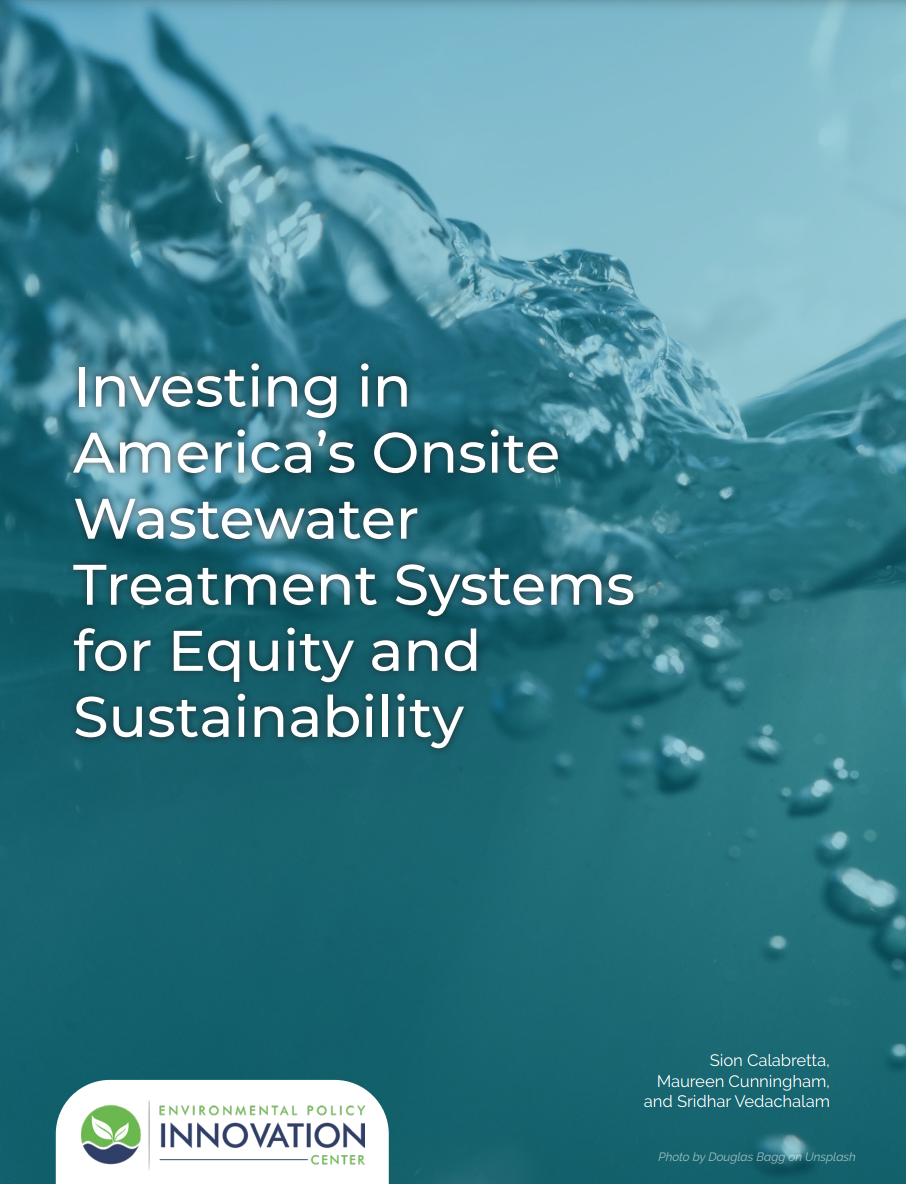New Report: Investing in America’s Onsite Wastewater Treatment Systems for Equity and Sustainability
Ensuring that all US households have access to clean water and sanitation will require a re-alignment of resources and investment, not only for centralized wastewater treatment systems but for decentralized ones too. Nearly twenty percent of America’s households today depend on onsite wastewater treatment systems (OWTS or onsite systems), but only about two percent of federal wastewater dollars have been invested to support these systems to date.[1] There are enormous disparities across the country, states, and localities in the availability, amount, accessibility, and use of funding for onsite systems, and more importantly, for the households and residents who rely on them.
The Environmental Policy Innovation Center released a report entitled Investing in America’s Onsite Wastewater Treatment Systems for Equity and Sustainability, taking a deeper look into some of the issues facing failing onsite systems and potential funding solutions, in addition to local and state-level examples and case studies.
In particular, this report offers key recommendations for policymakers:
Collect more data.
The data on onsite systems is insufficient. We need a clear understanding of the number of onsite systems around the country and the demographics of who uses them, in addition to how many and where septic systems are failing.
Utilize more Clean Water State Revolving Fund (CWSRF) funding for onsite systems.
With the large number of low-income households relying on onsite systems, we need to ensure the primary source of federal funding - the CWSRF program - reaches more communities and households in need. We believe more states should utilize this funding, and employ the options that are available, from direct loans to the use of intermediaries and nonprofit organizations.
Make USDA’s Single Family Housing Repair Loans and Grants accessible to more households.
With some key changes, the USDA program could be accessible to more households, from expanding the program to renters, increasing the maximum grant amount per household, and eliminating the age requirement for grants.
Use intermediaries to reach more households.
Connecting funding to individual onsite system users is a challenge, so taking advantage of third-party intermediaries can increase access to programs that support onsite systems. Federal and state governments can encourage the use of intermediaries to distribute funds. Nonprofits and community-based organizations (CBOs) are well-positioned to play an intermediary role.
Conduct more outreach and coordination.
Information about funding programs to support onsite systems is scattered and not available in one place. There is a need for a one-stop shop for this information online at the federal and state levels.
Encourage local governments to play a role.
Local governments have an important role to play, from mapping onsite septic system users and helping households access funding to incorporating planning strategies that are inclusive of neighborhoods and communities who rely on decentralized systems.
Center equity and community at the core of all solutions.
Listening to the needs of communities and designing suitable programs with local geography and communities in mind, increasing grants (rather than just loans), helping households apply for funds, not requiring residents’ legal status or documentation, and embracing renters are all basic tenets of equity that should be incorporated into funding programs.
To ensure equity and sustainability for onsite wastewater treatment systems, we need to drive more investment to the households and communities who really need it, especially unincorporated, disadvantaged, and other disinvested communities across the country. Realizing the human right to sanitation requires us to make an investment of resources and solutions, including for the onsite wastewater treatment systems on which nearly 22 million American households depend.
Footnotes
Refers to the Clean Water State Revolving Fund program only, where $3.4 billion of $153 billion spent since the program inception in 1988 has been invested in decentralized systems. Data from the National Information Management Systems (NIMS).


